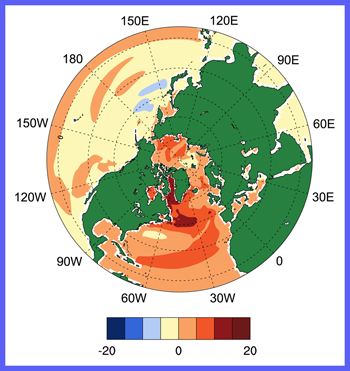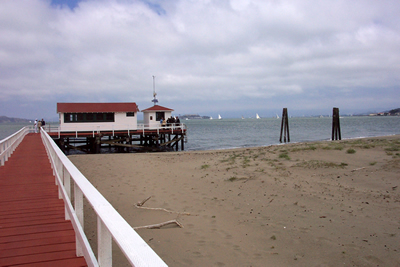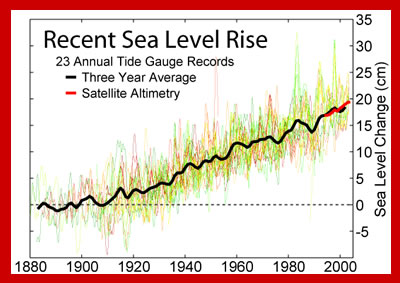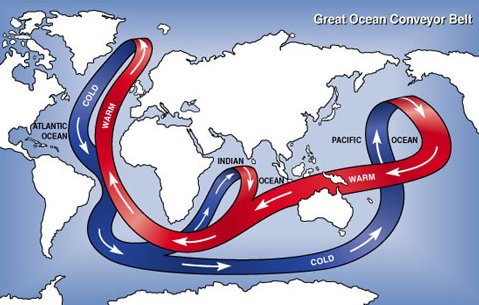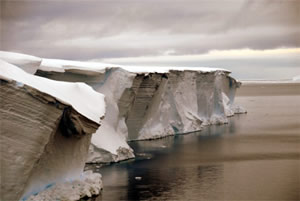Click on image for full size
Courtesy of NCAR
Sea-level Rise May Pose Greatest Threat to Northeast U.S., Canada
News story originally written on May 27, 2009
Water from the melting Greenland ice sheet may cause sea level to rise more in the North Atlantic than anywhere else. If this happens, cities such as New York, Boston and Halifax may be threatened.
"Major northeastern cities are directly in the path of the greatest rise." says scientist Aixue Hu of the National Center for Atmospheric Research, who led the study.
Melting ice sheets cause sea level rise, as water is added to the ocean. But in this case, changes to ocean circulation may cause additional sea level increase in this region.
Greenland’s melting ice may be causing even more sea level rise in the North Atlantic by changing ocean circulation. The currents could weaken as melting ice adds fresh water to the ocean. Weaker currents could cause the dense layer of cold water that sits in the deep Atlantic to warm. Since warm water takes up more space than cold water, sea level would rise more than in other places if this water warmed.
Today, sea level in the North Atlantic is about 71 centimeters (28 inches) lower than in the North Pacific, which doesn’t have a dense cold layer of water. If ocean currents warmed this water in the Atlantic, sea level could rise quickly and become more like other regions.
To figure out how melting Greenland ice may affect sea level, Hu and his team used a computer model that simulates global climate. With the model, they tested three possibilities for the future.
First, they used to the model to test what would happen if the amount of ice that melts increases each year just as it has over the past few years. They found that this would cause sea level to rise up to 51 centimeters (20 inches) more than global average.
Second, they tested what would happen if the amount of melting Greenland ice continued to increase, but not quite as fast. They found that this would cause sea level to rise about a foot more than global average.
Third, the team tested what would happen with only a very small increase in the amount of melt each year. They found that sea level in northeastern North America wouldn’t rise more than 20 centimeters (8 inches) more than the global average.


